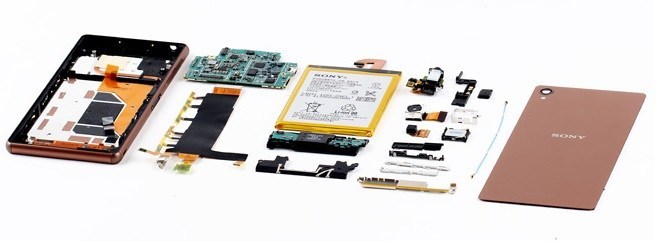Affiliate links on Android Authority may earn us a commission. Learn more.
Sony Xperia Z3 teardown shows how to waterproof a phone
Published onOctober 1, 2014

We are probably all familiar with the Sony Xperia Z3’s beastly hardware specifications by now. But if you’ve been wondering how Sony packaged that hardware up in such a nice looking frame, then this teardown, courtesy of ewisetech, will be just up your street.
Sony doesn’t offer removable batteries with its Xperia handsets, so the manufacturers have glued the back on to prevent tampering. Once it’s removed, you’ll notice the familiarly large battery seen in most modern handsets, and direct access to the Z3’s inside. Sony has been including dust and water resistance (IP68) as standard with all of its recent flagships, which resulted in this rather refreshing underwater unboxing. In the gallery below, you can see the lengths that Sony gone to in sealing the entire edge of the smartphone with a thin insulating rubber layer.
Above the battery, the motherboard is held in by a set of screws, which can be easily removed and the whole part can be lifted out. It’s here that you can spot one of the Xperia Z3’s particularly good design features – an integrated heat pipe connected to the SoC to dissipate heat away from the processor and towards the edge of the case. With limited space available for cooling, this heat pipe seems like a very sensible feature to implement. The headphone jack, camera, and the antenna module can also all be removed by a simple set of screws, making any replacements easy to swap out.
Turning to the mainboard itself, Samsung is providing the memory chips for both internal storage and RAM. The Qualcomm PM8941 is the handset quick-charge component for faster mains charging. Qualcomm is also providing the LTE modem (WTR1625L) and audio codec (WCD9320) for the Xperia Z3, whilst there’s a NXP class D amplifier to power the handset’s speakers. You might also have spotted dual-SIM card slots, which probably means that they’ve taken apart the Z3 Dual handset (D6633). Even so, the rest of the hardware remains the same.
Next: Best Sony Xperia z3 cases.
Sony’s successive hardware revisions appeared to have paid off. The insides of the Xperia Z3 seem very well optimised and well thought out. Let’s hope it doesn’t take too long to put it all back together.